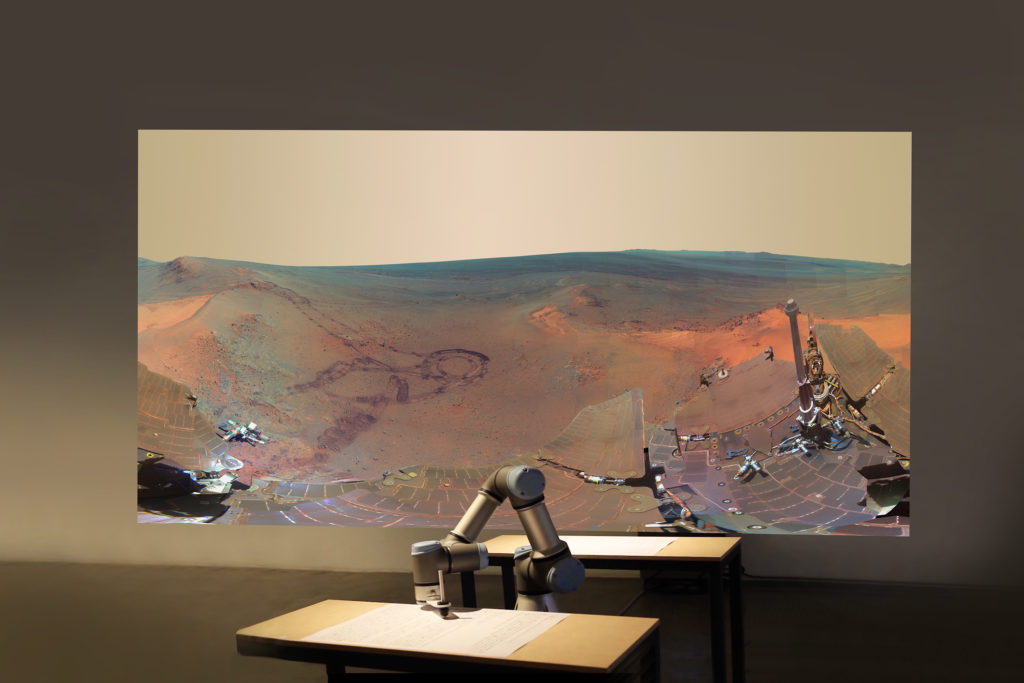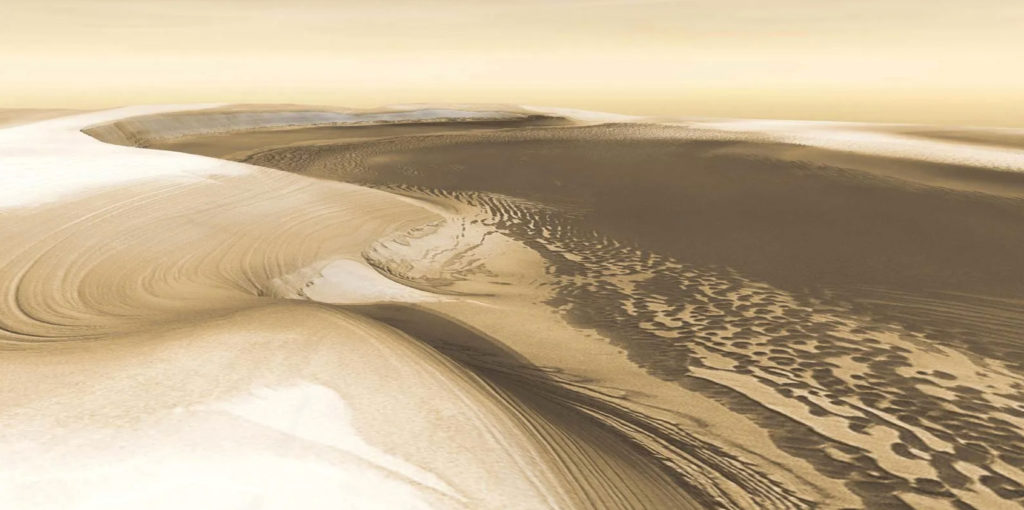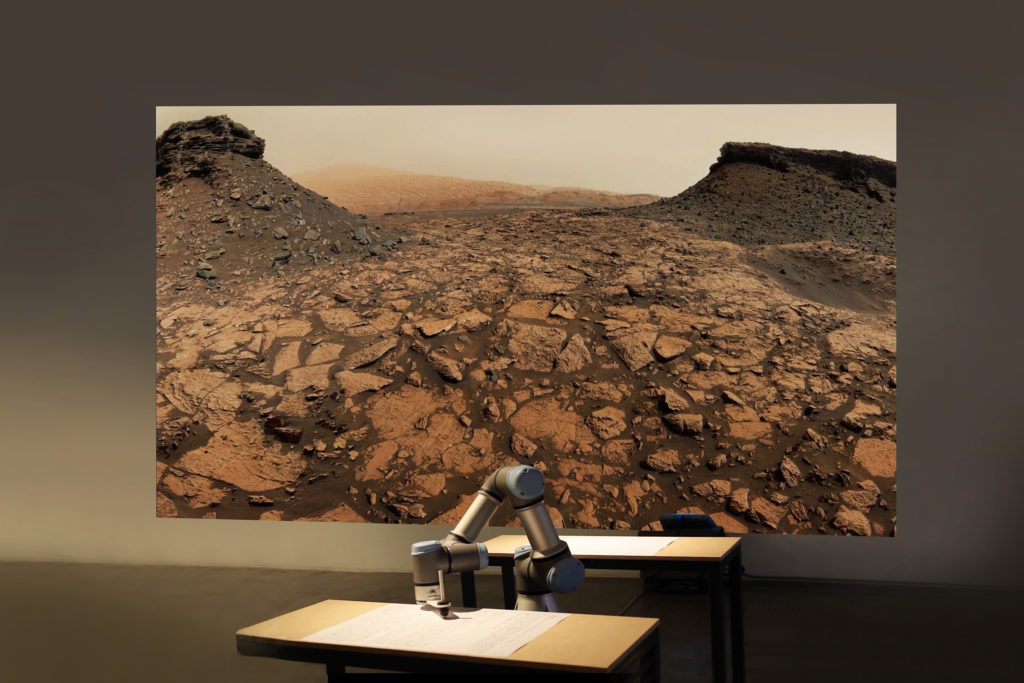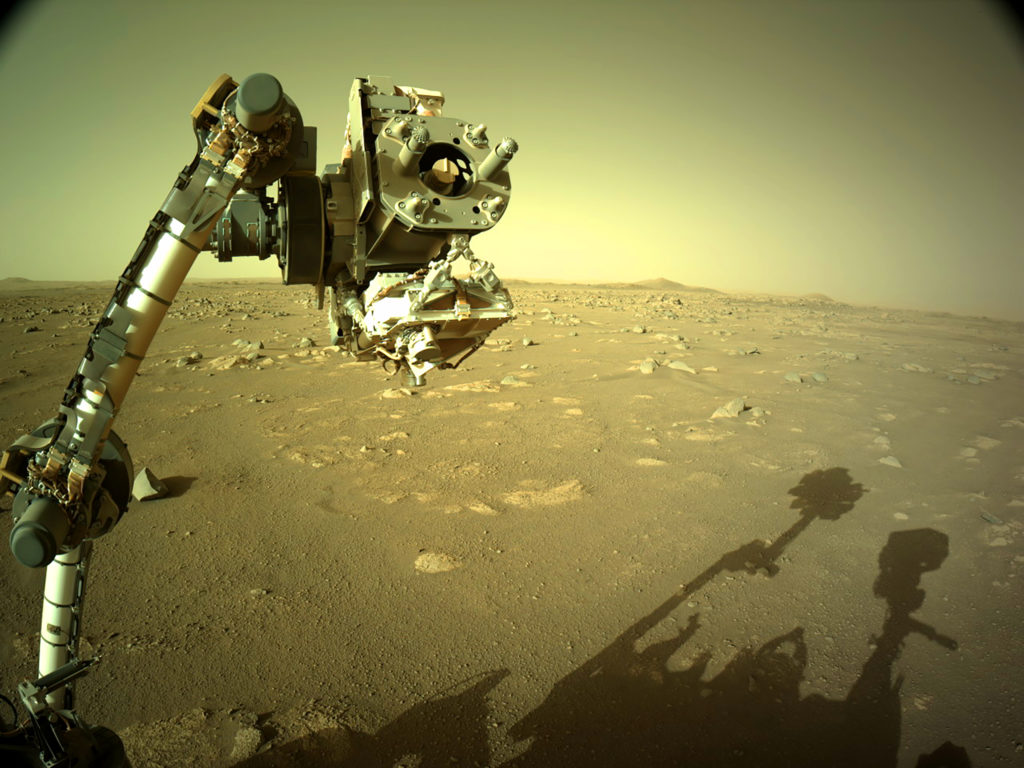冬枯れ や 世は一色に 風の音
Fuyugare ya / yo wa isshoku ni / kaze no oto
Winter solitude. In a world of one color. The sound of wind.
Matsuo Bashō

A robotic arm moves slowly and smoothly looking for a piece of paper. It rests a pen lightly on the sheet and stops for a while as if it were the moment of a music director before giving the order to release the sounds.
And then, the robot starts to write. It describes a strange and unknown distant land like an explorer and a poet. Its descriptions tell us about colors, skies, rocks, mountains, lights, valleys, stars, shapes and sizes. Its poetry is made in short phrases telling us the perception of moments of that alien nature. Its writing is exquisite, a sort of mixing of Matsuo Bashō and Alexander Von Humboldt.
Our writer robot describes images sent by another robot moving on Mars. Two entangled machines connected by a technosphere of telecommunications and algorithms that establish an unique creative relationship.

“Ochre rocks form grooves where the view is lost / falling sick on a journey /my dream goes wandering / over a field of dried ground”.

“Great blanket of snow, brown frozen soil extends 50 nautical miles in the plain / The ice and ice / This evening would have / The great moons of December .”

NASA’s Mars Perseverance rover updates images regularly which feed an automaton caption algorithm. It automatically generates textual descriptions of rover photographs with Deep Learning.
https://mars.nasa.gov/mars2020/multimedia/raw-images/

Our research deals with deep learning algorithms trained with Basho and Von Humboldt literature for describing images. Algorithms generate image captions which are used in trained neural networks for final descriptive text.
The robotic arm is programed for writing sentences generated by those algorithms
For each Perseverance image fed, the robot will write a sort of caption poem associated.

Bashō and Humboldt on Mars
“Natur muss durch Gefühl erfahren werden.”
“Nature must be experienced through feeling.”
Alexander von Humboldt
年暮ぬ笠きて草鞋はきながら
toshi kurenu / kasa kite waraji / hakinagara
another year is gone / a traveler’s shade on my head, / straw sandals at my feet
Matsuo Bashō

Alexander von Humboldt (1769 – 1859) was a German polymath, geographer, naturalist, explorer, and proponent of Romantic philosophy and science.
Humboldt revived the use of the word cosmos from the ancient Greek and assigned it to his multi volume treatise, Kosmos, in which he sought to unify diverse branches of scientific knowledge and culture. This important work also motivated a holistic perception of the universe as one interacting entity,
In his idea of “collective thought”, Humboldt considers writing as an act of translation, a way to assure the understanding of the world to a large public. He not only built a dialogue with other scientists, but also with a non-scientist public, considering that the world has to be understood by everyone.
By using metaphors and depicting the landscapes as paintings, using art as a medium in his writing, he therefore emphasized the style, not over the scientific message but in order to reinforce it.
In contrast to the mathematical and theoretical climate models of his contemporaries, Humboldt’s transdisciplinary science included regional, local and global climatological observations. He always kept his eye on the interdependence of humans and the environment.

Matsuo Bashō, (松尾 芭蕉, 1644 –1694) was the most famous poet of the Edo period in Japan and today he is recognized as the greatest master of haiku.
Bashō was also recognized for his works in the collaborative haikai no renga form. A Japanese form of popular collaborative linked verse poetry.
He wrote travel essays like Records of a Weather-Exposed Skeleton (1684), written after his journey west to Kyoto and Nara.
Although he himself believed his best work lay in leading and participating in renku:
“Many of my followers can write hokku as well as I can. Where I show who I really am is in linking haikai verses.”
Bashō renounced the social, urban life of the literary circles and was inclined to wander throughout the country, heading west, east, and far into the northern wilderness to gain inspiration for his writing. His poems were influenced by his firsthand experience of the world around him, often encapsulating the feeling of a scene in a few simple elements.
Basho and Humboldt belonged to very different places and times and they were different from other ones of their epoch. Nevertheless they have something in common.
In Basho and Humboldt figures we find love for the world and the relationship with other ones. They created his works with others. They were travelers and their creations emerged from wandering, taking care of their sensitivity to what they see and surrounding them.
Our algorithms aim to capture their spirit through speech and writing .
A series of algorithms that intertwin Eastern and Western traditions learning to describe an unknown land like Mars through the look of these two immense figures of the planet.